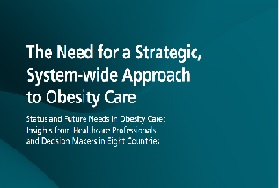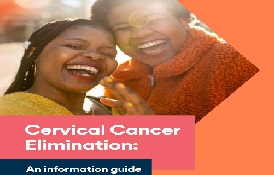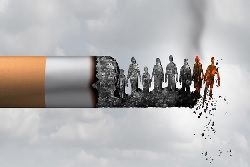
CANCER PREVENTION IN ACTION
Cancer deaths can be reduced if cases are detected and treated early. There are two components of early detection:
Early diagnosis
When identified early, cancer is more likely to respond to treatment and can result in a greater probability of survival and less morbidity, as well as less expensive treatment. Significant improvements can be made in the lives of cancer patients by detecting cancer early and avoiding delays in care.
Early diagnosis consists of three components:
- being aware of the symptoms of different forms of cancer and of the importance of seeking medical advice if you are concerned.
- access to clinical evaluation and diagnostic services; and
- timely referral to treatment services.
Early diagnosis of symptomatic cancers is relevant in all settings and most cancers. Cancer programs should be designed to reduce delays in, and barriers to, diagnosis, treatment and care.
Screening
Screening aims to identify individuals with findings suggestive of a specific cancer or pre-cancer before they have developed symptoms. When abnormalities are identified during screening, further tests to establish (or not) a diagnosis should follow, as should referral for treatment if needed.
Screening programs are effective for some but not all cancer types and in general are far more complex and resource-intensive than early diagnosis as they require special equipment and dedicated personnel.
Patient selection for screening programs is based on age and risk factors to avoid excessive false positive studies. Examples of screening methods are:
- HPV testing for cervical cancer.
- the PAP cytology test for cervical cancer.
- visual inspection with acetic acid (VIA) for cervical cancer; and
- mammography screening for breast cancer in settings with strong or relatively strong health systems.
- Screening using fecal occult blood tests (FOBt) can detect bowel cancer at an earlier stage than symptomatic presentation and has the potential to significantly decrease colorectal cancer mortality.
Quality assurance is required for both screening and early diagnosis programs.
Between 30-50% of all cancer cases are preventable. Prevention offers the most cost-effective long-term strategy for the control of cancer. WHO works with Member States to strengthen national policies and programs to raise awareness and, reduce exposure to cancer risk factors, and ensure that people are provided with the information and support they need to adopt healthy lifestyles.
To strengthen national efforts to address the burden of cancer and other noncommunicable diseases (NCDs), the WHO Global Action Plan for the Prevention and Control of NCDs 2013-2020 provides a road map to reduce premature mortality from NCDs by 2025 through targeting many of the risk factors below:
Tobacco
Tobacco smoke has more than 7000 chemicals, at least 250 are known to be harmful and at least 69 are known to cause cancer. Worldwide, tobacco use is the single greatest avoidable risk factor for cancer mortality and kills more than 8 million people each year, from cancer and other diseases. Nearly 80% of the 1.1 billion smokers in the world live in low- and middle-income countries.
Physical inactivity, dietary factors, obesity and being overweight.
Overweight and obesity are linked to many types of cancer such as esophagus, colorectal, breast, endometrial and kidney. Regular physical activity, and maintaining a healthy body weight, and a healthy diet can risk. Excess body mass was responsible for 3.4% of cancers in 2012, including 110 000 cases of breast cancer per year.
Alcohol use
Alcohol use is a risk factor for many cancer types including cancer of the oral cavity, pharynx, larynx, esophagus, liver, colorectal and breast. Risk of cancer increases with the amount of alcohol consumed. In 2016, alcohol-attributable cancers were estimated to be responsible for 400,000 deaths worldwide, predominantly among men.
Infections
Cancer causing infections, such as hepatitis and human papilloma virus (HPV), are responsible for up to 25% of cancer cases in low- and middle-income countries Vaccines are available for hepatitis B virus and some types of HPV and can reduce the risk of liver and cervical cancers, respectively.
Environmental pollution
It has been estimated that outdoor air pollution contributed to 4.2 million premature deaths worldwide in 2016, of which 6% were lung cancer deaths. Additionally, close to 4 million people die prematurely from illness attributable to the household air pollution from cooking with solid fuels and kerosene.
Occupational carcinogens
It is well documented that occupational carcinogens are causally related to lung cancer, mesothelioma, and bladder cancer. For example, mesothelioma (cancer of the outer lining of the lung or chest cavity) is to a large extent caused by work-related exposure to asbestos.
Radiation
Exposure to all types of ionizing radiation increases the risk of various types of malignancy including leukemia and several solid tumors. Risks increase when the exposure occurs at a young age and when the exposure amount is higher. Ultraviolet (UV) radiation, and in particular solar radiation, is carcinogenic to humans, causing all major types of skin cancer, such as basal cell carcinoma (BCC), squamous cell carcinoma (SCC) and melanoma. Avoiding excessive exposure and using sunscreen and protective clothing are effective preventive measures. UV-emitting tanning devices are now also classified as carcinogenic to humans based on their association with skin and ocular melanoma cancers.
There's no sure way to prevent cancer, but you can help reduce your risk by making healthy choices like eating right, staying active, and not smoking.
Make cancer prevention and screening part of your lifestyle. Preventative screening tests can lead to early detection of cancers, some of which, if discovered early, can be successfully treated. These include common cancers such as colorectal, lung, cervical and breast cancers, among others. It's also important to follow recommended screening guidelines, which can help detect certain cancers early.
Prepared by: Puan Shafikah binti Rahim
Sources:
https://www.preventcancer.org/resource/ways-to-prevent-cancer/
https://www.who.int/activities/preventing-cancer
https://www.health.ny.gov/diseases/cancer/prevention_in_action/
https://takeactionagainstcancer.com/
https://takeactionagainstcancer.com/paid-time-off/get-the-facts/
Tarikh Input: 22/02/2023 | Kemaskini: 22/02/2023 | aimerul
PERKONGSIAN MEDIA



























